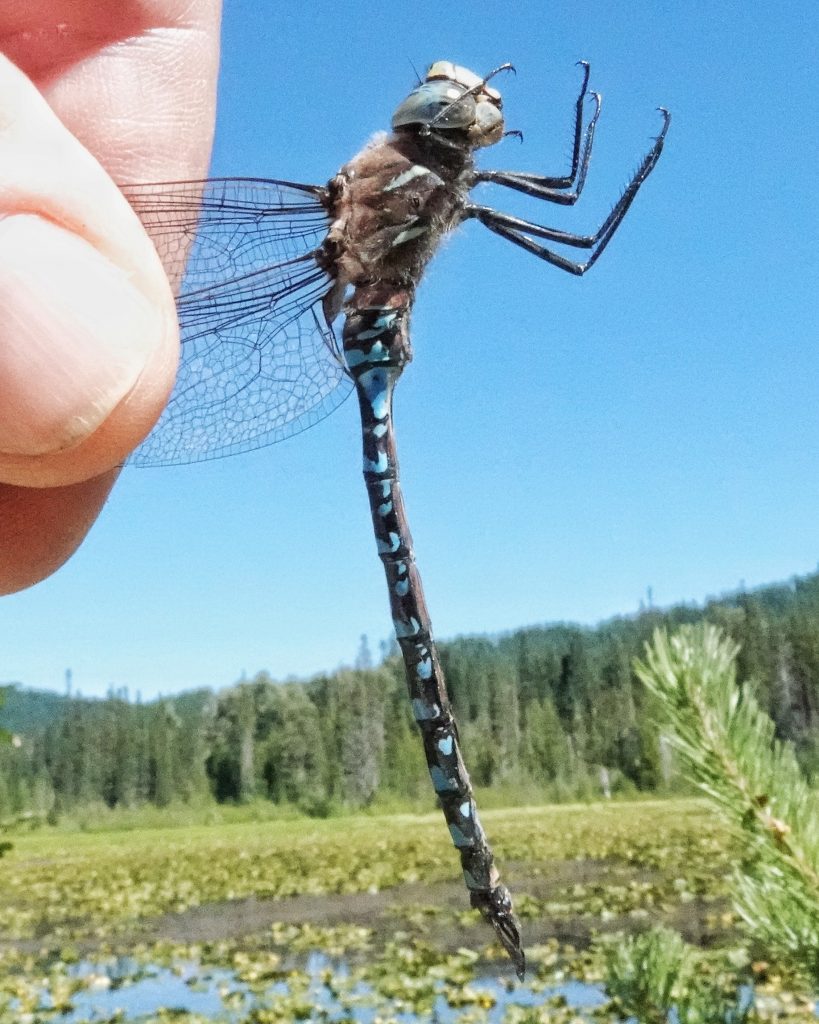
This is the lifer dragonfly that I mentioned in A Trip to Mt. Adams . It is not an uncommon dragonfly in our region, once you get into the mountains, but apparently I don’t spend nearly enough time around montane, boggy lakes in the mid to late summer. Twice before I’ve seen what were probably this species in the South Prairie area. One of them was flying by just a few feet from my face as I was fishing and seemed to have the broken thoracic stripes, and another I netted and am almost positive that it was a variable darner, but I lost it trying to get it out of the net. This one was just suddenly there as I turned away from examining the bankside vegetation, so I didn’t have time to mess it up by thinking about it.
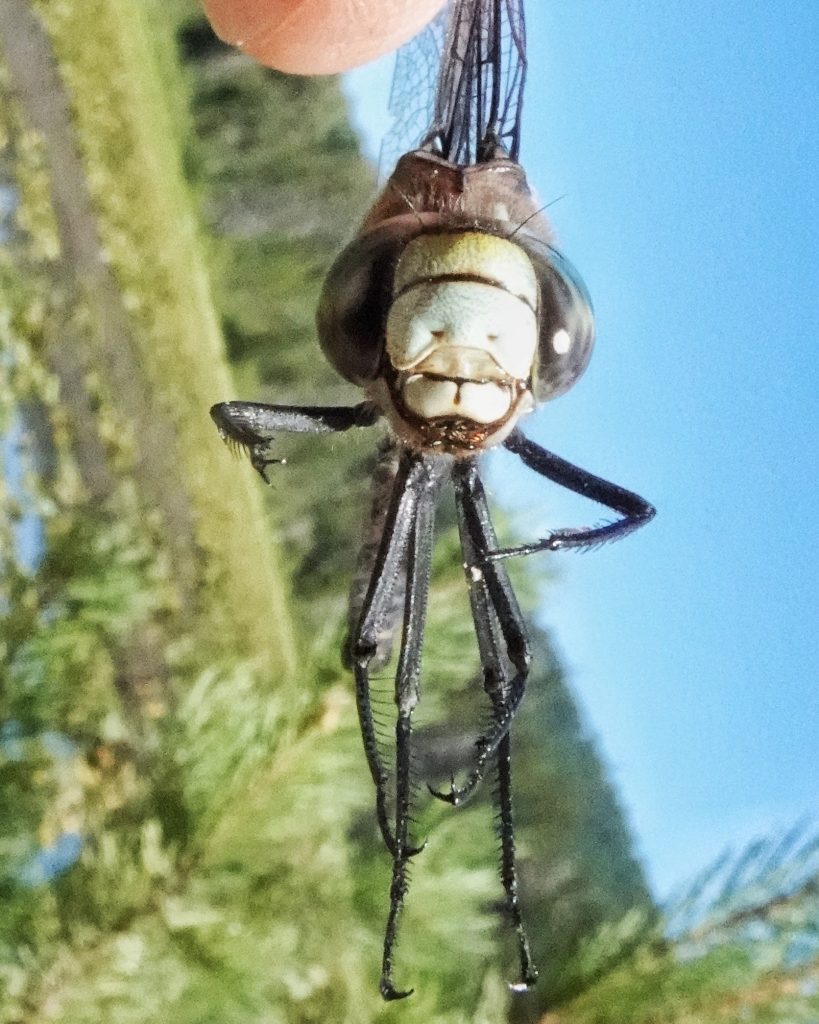
“This Darner often gathers in swarms over dirt roads. It flies long after dark on warm summer evenings, and can spot flying insects when it’s too dark for a person to see them. Adults are able to regulate their body temperature which enables them to fly in temperatures too cold for most dragonflies…Males establish and defend territories along the shores of ponds and marshes. After males and females mate, females fly singly, without the male attached, to lay their eggs in the stems and leaves of aquatic plants. Unique individuals resembling females but having male reproductive organs have been collected. Such individuals are called androgynomorphs.” Variable Darner
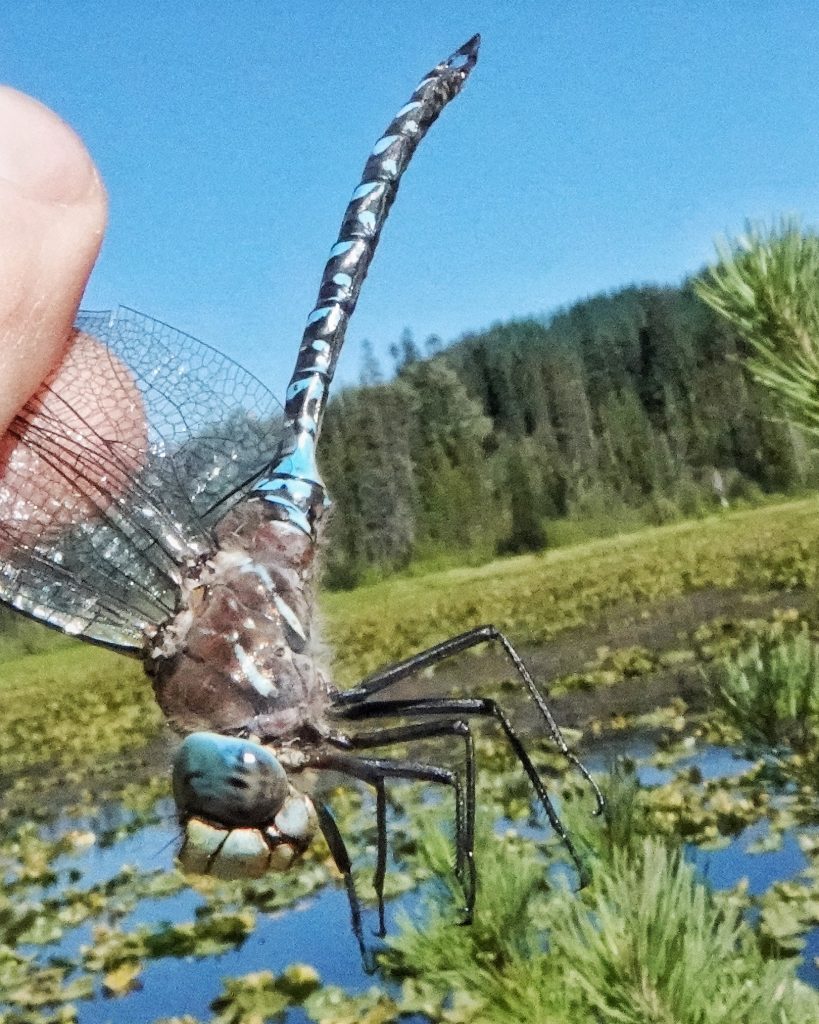
Description– “This is a large dragonfly with a length of 2 1/2 to 2 3/4 inches (65 to 70 mm). The male is dark brown to black. The top of the thorax is marked with two greenish dashes. Each side of the thorax is marked with a pair of diagonal stripes or with two pairs of elongated spotsarranged in diagonal rows. In either case, half of the marks are greenish and half are bluish. The abdomen is spotted with green and blue. The female is marked similarly; however, the base color is brown and the abdominal marks are green.” Variable Darner
Similar species– No other darner in our region has the very thin and/or broken thoracic stripes.
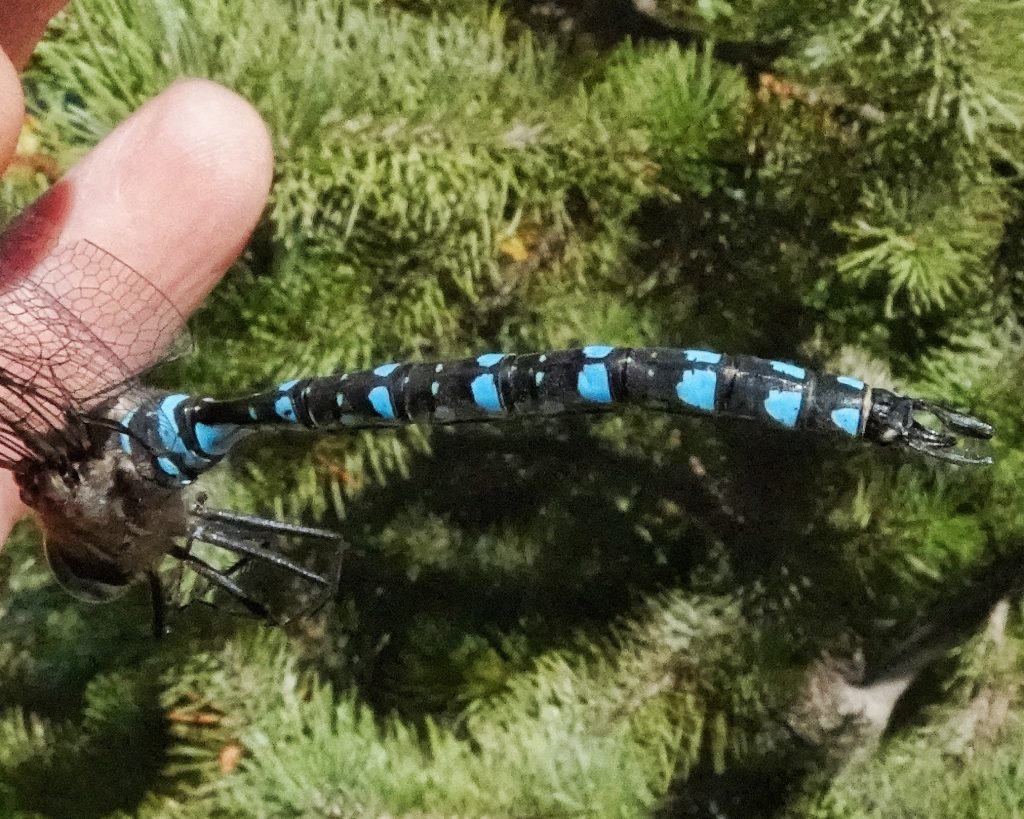
Habitat– “Preferred habitat includes a variety of lakes and ponds with dense shoreline vegetation, marshy or boggy ponds, fens, and saline ponds, as well as slow-moving streams.” Variable Darner – Montana Field Guide; mostly above 3,000’ elevation in the PNW.
Range– Native to most of northern North America, and their range extends south in the western US to California, Arizona and the southern Rockies; in the PNW it is found almost region wide, but is mostly absent from the immediate coast, Willamette Valley and nw Oregon, Washington Coast Range and Puget Trough.
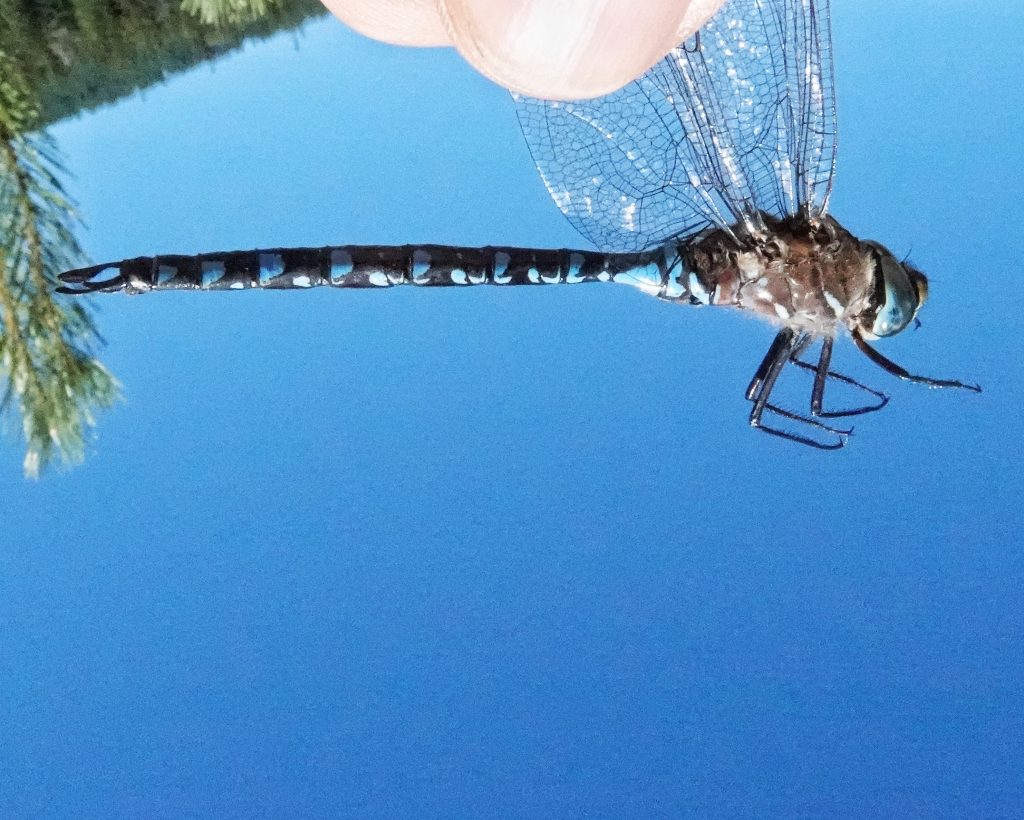
Eats– “Naiads feed on a wide variety of aquatic insects, such as mosquito larvae, other aquatic fly larvae, mayfly larvae, and freshwater shrimp. They will also eat small fish and tadpoles. Adults-The dragonfly will eat almost any soft-bodied flying insect including mosquitoes, flies, butterflies, moths, mayflies, and stoneflies. It has also been known to prey on immature dragonflies of other species found resting on blades of grass.” Variable Darner
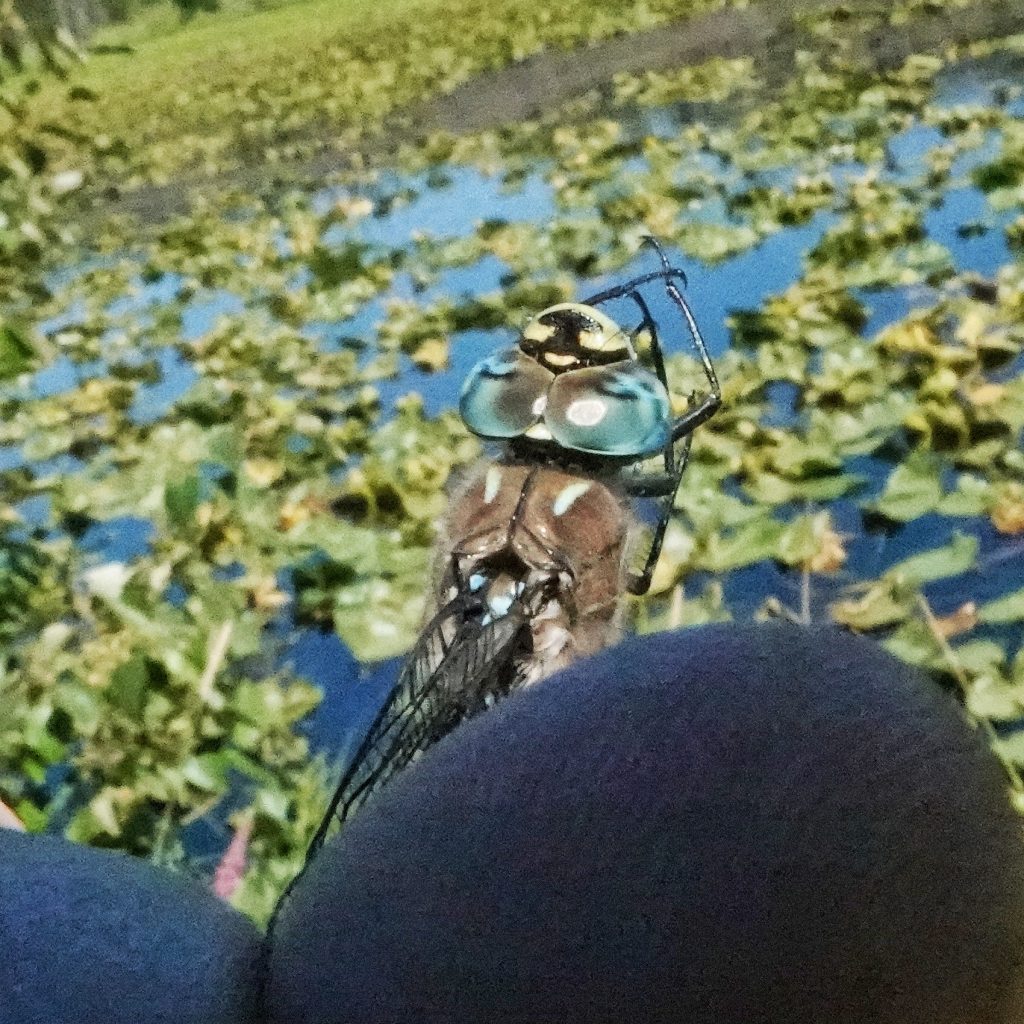
Eaten by– Fish, amphibians, and waterfowl consume the nymphs, and adults are preyed upon by many birds and bats.
Adults active– Flies from June into October, depending on latitude and elevation
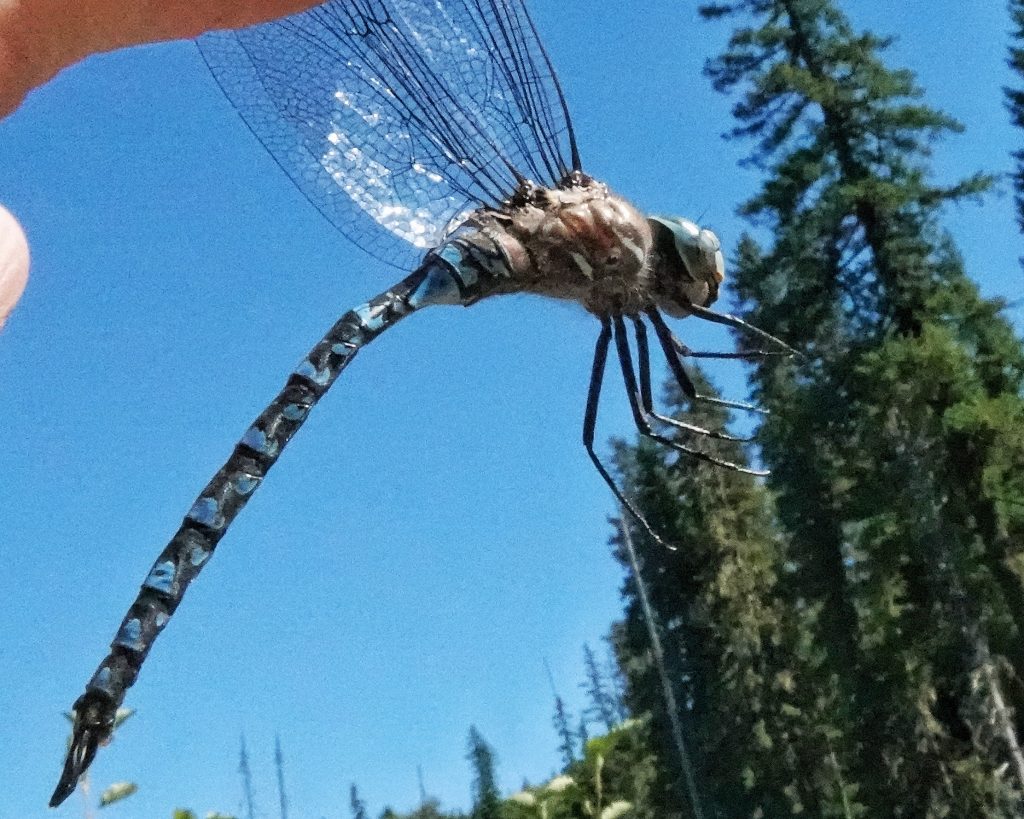
Life cycle– “Like other Darners, the naiads are active predators, and are able to swim by jet propulsion – squirting water out from the ends of their abdomens. They generally take several years to mature, and when they emerge, or change into adult dragonflies, they do so at night. This behavior probably evolved to avoid being eaten be daytime predators.” Variable Darner
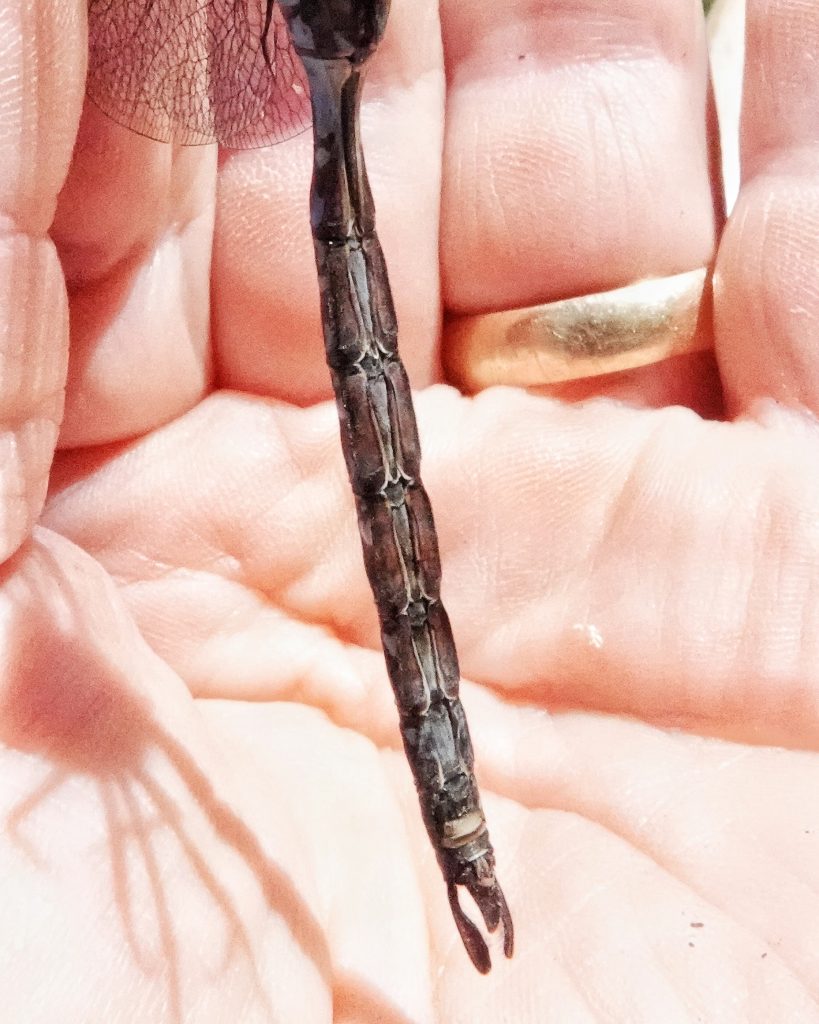
Etymology of names– The origin of the name Aeshna is obscure, but it has been suggested that it is a corruption of the Greek word for ‘ugly/deformed’, or a corruption of the Greek word for ‘spear’, which seems more likely. The specific epithet interrupta is from the Latin words for ‘to break apart’, and refers to the often broken or interrupted thoracic side stripes.
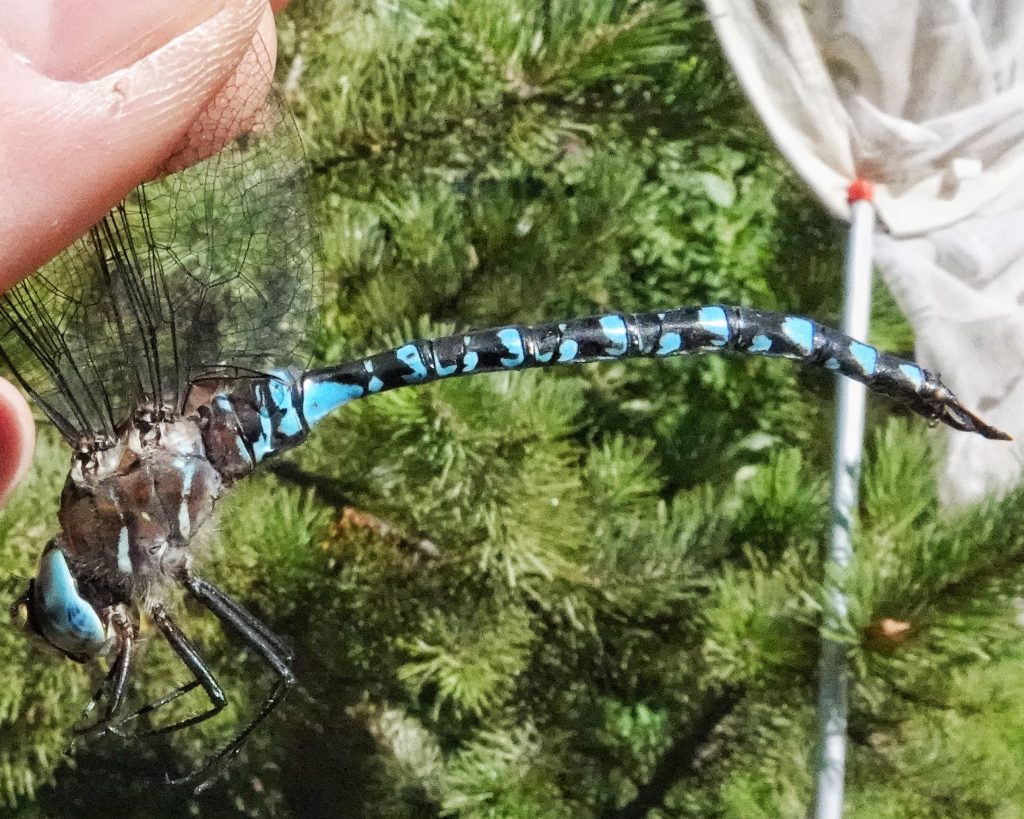
Variable Darner – Montana Field Guide
Species Aeshna interrupta – Variable Darner – BugGuide.Net
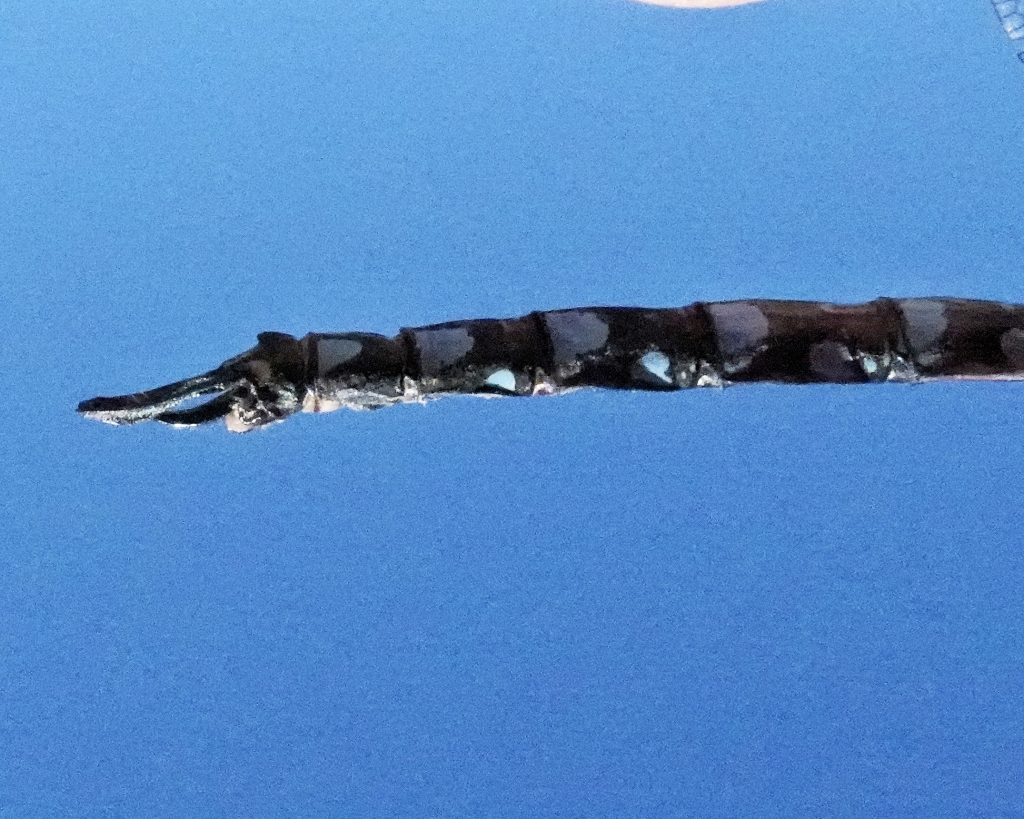
I love these photos!
Thanks, Kat!